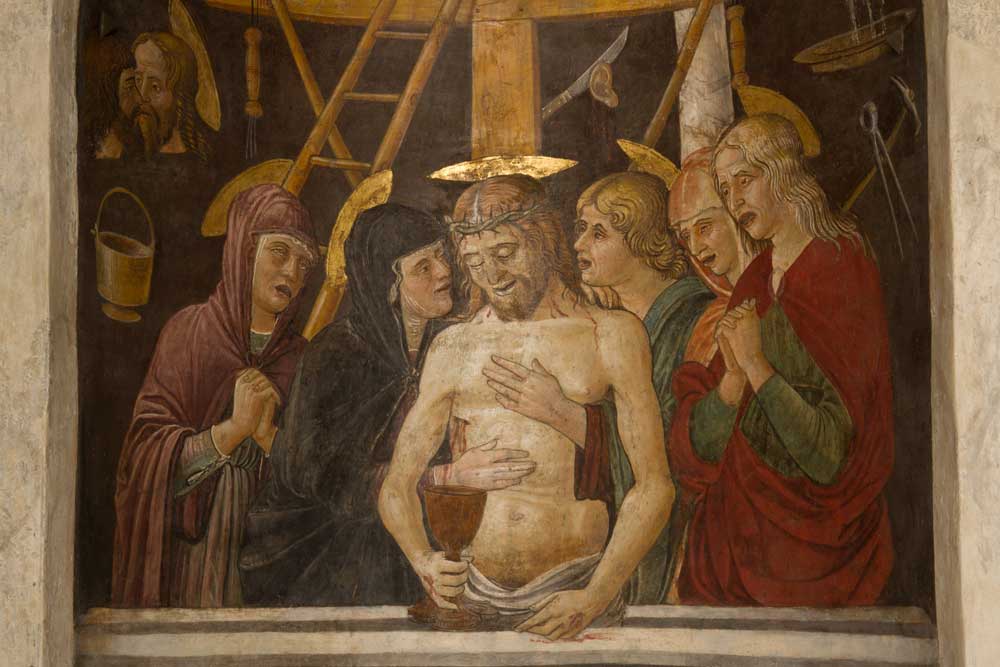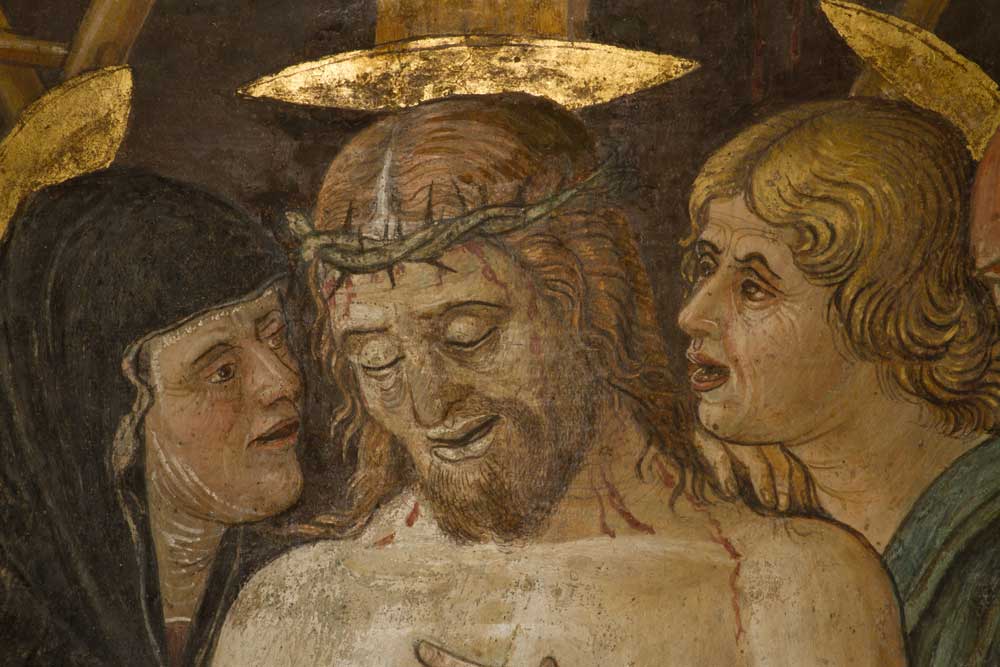Restoration sponsored by Interchem Italia, Vigonza (PD) Restoration by Giordano Passarella September-October 2017
The fresco, relevant for quality and interest, is located on the right-hand pillar of the counter-façade, almost welcoming visitors. It, together with the above wall, reporting the indulgence of 23,000 years and 23 days and the prayers, painted, at an angle, on the wall of the counter-façade and traditionally ascribed to Saint Gregory the Great, documented how in this corner of the basilica special attention was put on the suffrage for the dead and on personal meditation on the themes of the Passion. Such connection between prayers and images was widely documented in Europe in the previous era and especially in the Fifteenth century, particularly in the context of Franciscan devotion.
The fresco executed at the end of the fifteenth century is attributable to Jacopo Parisati, known as Montagnana, main artist of the post-Mantegna painting in Padua and also active in other parts of the basilica.
In particular, Jacopo da Montagnana painted the walls of the Gattamelata Chapel, the first on the right (now Chapel of the Santissimo). These frescoes have been lost, but the personality of the painter, who crosses the culture of the early Giovanni Bellini with the Mantegna’s style substratum of the Po Valley, is well documented in this work, which, thanks to the objects and episodes represented, offers a kind of guided meditation on the themes of the Passion.




